Related Research Articles

Thomas Boleyn, Earl of Wiltshire, 1st Earl of Ormond, 1st Viscount RochfordKGKB, of Hever Castle in Kent, was an English diplomat and politician who was the father of Anne Boleyn, the second wife of King Henry VIII, and was thus the maternal grandfather of Queen Elizabeth I. By Henry VIII he was made a knight of the Garter in 1523 and was elevated to the peerage as Viscount Rochford in 1525 and in 1529 was further ennobled as Earl of Wiltshire and Earl of Ormond.
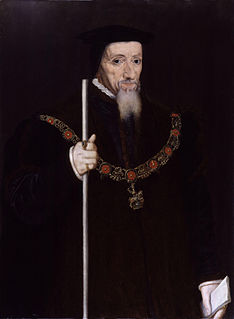
William Paulet, 1st Marquess of Winchester, styled Lord St John between 1539 and 1550 and Earl of Wiltshire between 1550 and 1551, was an English Lord High Treasurer, Lord Keeper of the Great Seal, and statesman.

Sir Marmaduke Constable of Flamborough, Yorkshire, was a courtier and soldier during the reigns of Richard III, Henry VII and Henry VIII.

Sir Henry Neville was an English courtier, politician and diplomat, noted for his role as ambassador to France and his unsuccessful attempts to negotiate between James I of England and the Houses of Parliament. In 2005, Neville was put forward as a candidate for the authorship of Shakespeare's works.

Thomas Burgh, 1st Baron Burgh also spelt Borough, KG, 1st Baron Borough of Gainsborough, also de jure 5th Baron Strabolgi and 7th Baron Cobham of Sterborough, was an English peer. In 1513 he was knighted on Flodden Field, where he was one of the King's Spears, a bodyguard of King Henry VIII. He later became Lord Chamberlain to Anne Boleyn. He was also one of the twenty-six Peers summoned to the trial of Anne Boleyn in May 1536.
George Hastings, 1st Earl of Huntingdon was an English nobleman.

Thomas Grey, 2nd Marquess of Dorset was an English peer, courtier, soldier, and landowner of the House of Grey.
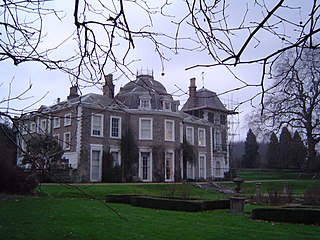
Jocasta "Joyce" Culpeper, of Oxon Hoath was the mother of Catherine Howard, the fifth wife and Queen consort of King Henry VIII.
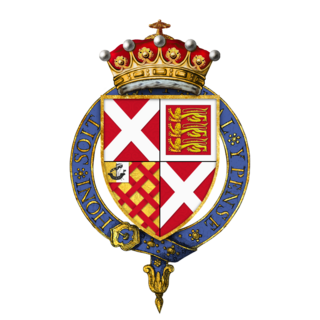
Ralph Neville, 4th Earl of WestmorlandKG, was an English peer and soldier. He was the grandson of Ralph Neville, 3rd Earl of Westmorland, and the father of Henry Neville, 5th Earl of Westmorland.

Sir Gervase Clifton of Clifton, Nottinghamshire and London was a 15th-century English knight and landowner. He was beheaded after the Battle of Tewkesbury.
John Neville, 3rd Baron Latimer was an English peer. His third wife was Catherine Parr, later queen of England.
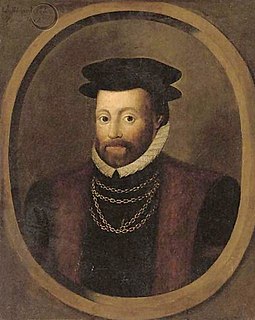
Edward North, 1st Baron North was an English peer and politician. He was the Clerk of the Parliaments 1531–1540 and Lord Lieutenant of Cambridgeshire 1557–1564. A successful lawyer, he was created the first Baron North, giving him a seat in the House of Lords.

Sir Anthony Wingfield KG, MP, of Letheringham, Suffolk, was an English soldier, politician, courtier and member of parliament. He was the Lord Lieutenant of Suffolk from 1551 to 1552, and Vice-Chamberlain of the Household in the reign of Edward VI.
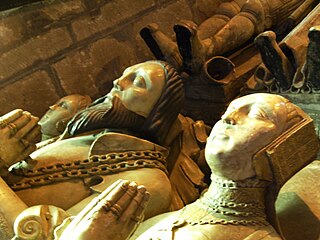
Sir John Giffard, of Chillington in Brewood, was a soldier, courtier, member of the English Parliament and Staffordshire landowner, who made his mark mainly during the reign of Henry VIII.
Thomas Treffry, of Place at Fowey, was an English businessman, administrator and politician from Cornwall.

Sir Giles Strangways, of Melbury House, Melbury Sampford, and of Abbotsbury, both in Dorset, was an English politician.

Sir Marmaduke Constable, of Everingham, Yorkshire, was an English soldier and Member of Parliament. He was the great-grandfather of the poet, Henry Constable, author of Diana, one of the first sonnet sequences in English.
Sir Christopher Danby MP JP, of Farnley, Masham, and Thorp Perrow, Yorkshire, of St. Paul's Cray, Kent, and of Kettleby, Lincolnshire, and of Nayland, Suffolk, was an English politician.

Richard Neville, 2nd Baron Latimer KB of Snape, North Yorkshire, was an English soldier and peer. He fought at the battles of Stoke and Flodden.
Sir Richard Tempest was an English landowner, courtier, soldier, administrator and legislator under Kings Henry VII and Henry VIII who was imprisoned after joining the Pilgrimage of Grace and died in jail.
References
- 1 2 3 4 5 6 7 Kirk, L. M. (1982), "Neville, Sir John II (by 1488-1541), of Chevet, Yorks. and Mile End, Stepney, Mdx.", in S.T. Bindoff (ed.), The History of Parliament: the House of Commons 1509-1558 , retrieved 5 September 2017
- 1 2 3 4 5 6 Visitation of Yorkshire William Flower 1563 and 1564 p 148
- ↑ John Croft, Excerpta Historica (London, 1797), p. 78
- ↑ Francis Peck, Desiderata Curiosa, vol. 2 (London, 1779), pp. 247-9.